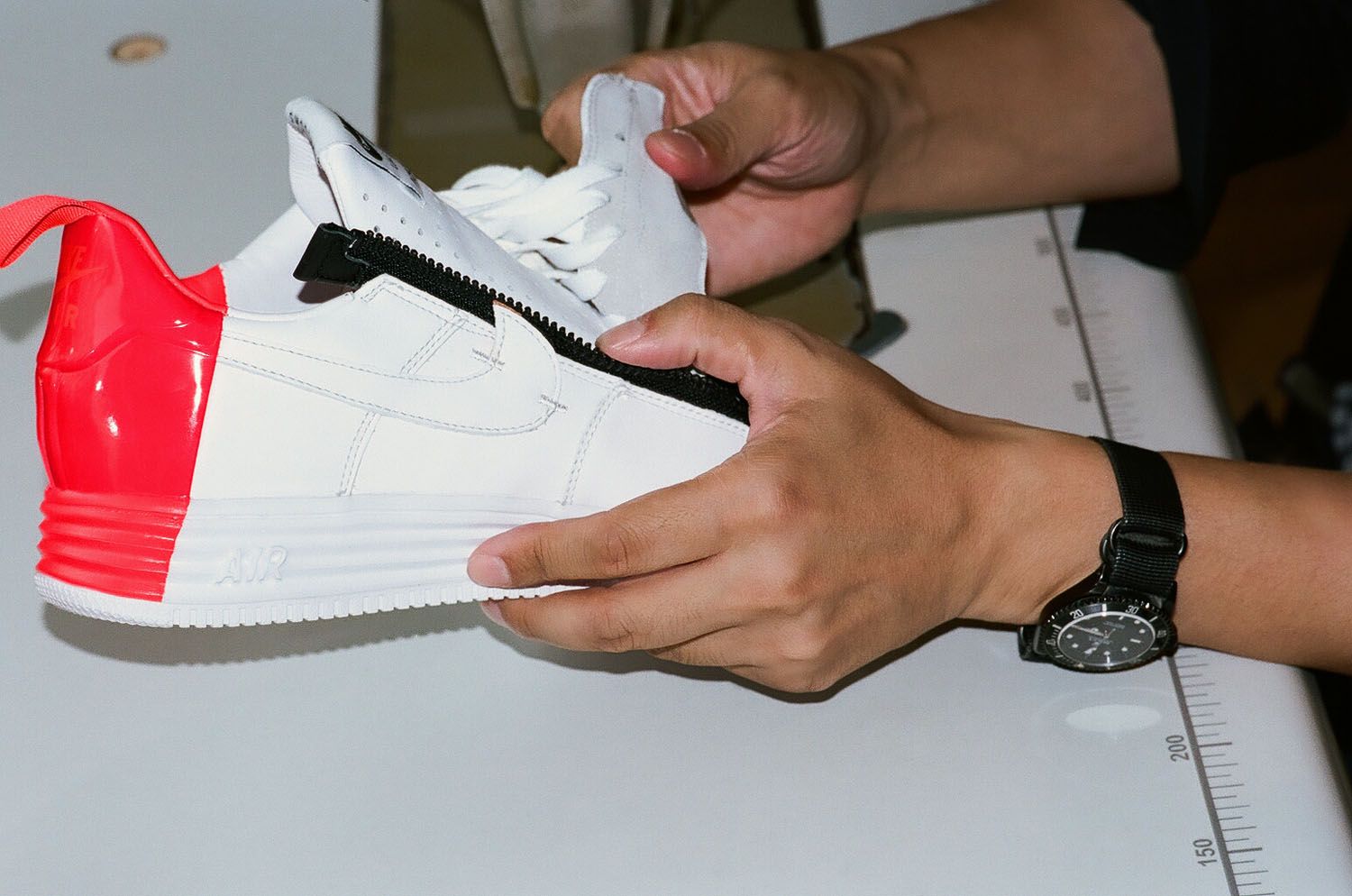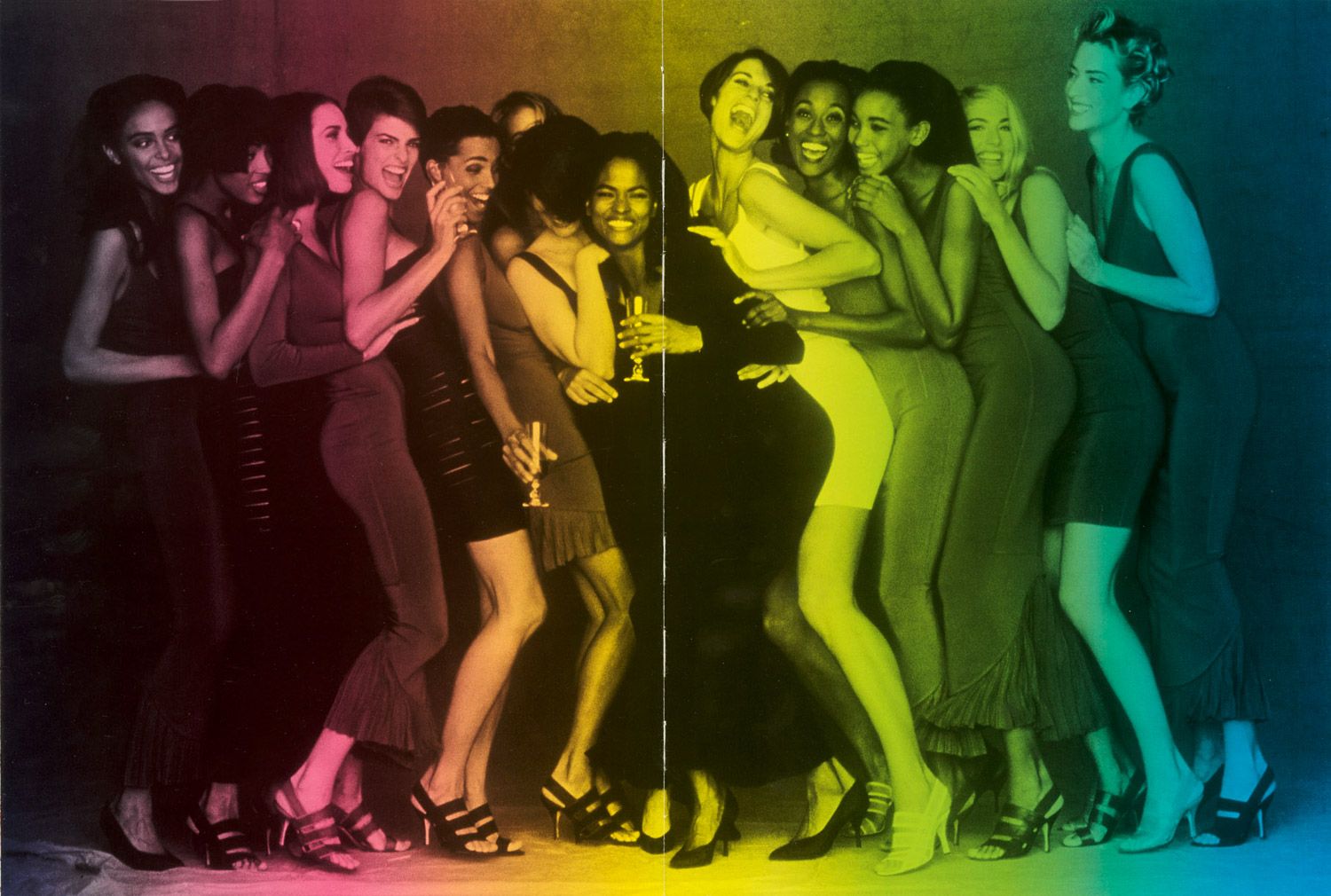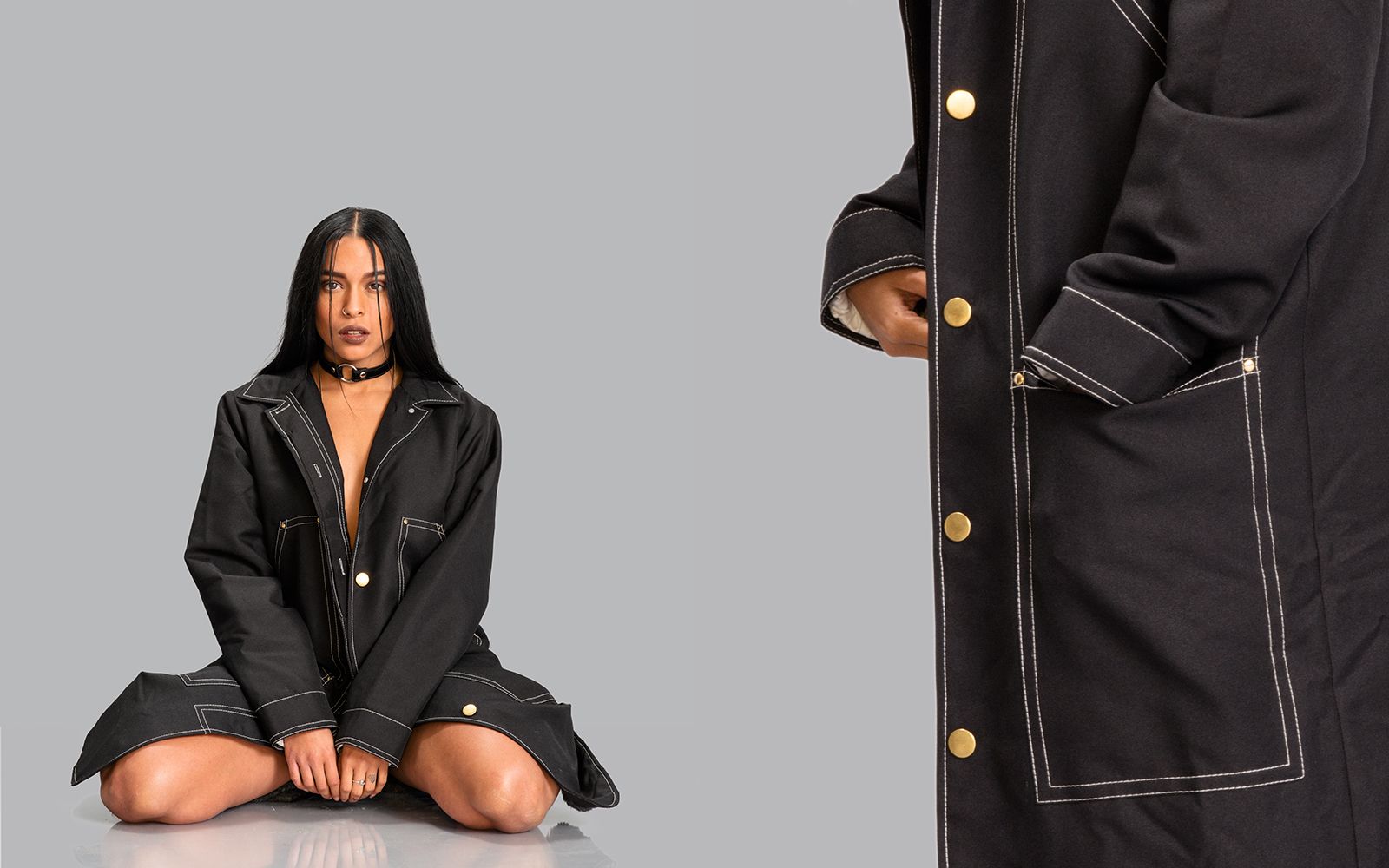ACRONYM’s Functional Intervention on the NIKE Air Force One

Take an Air Force One. Slice it in half. Bolt on a Zipper. Scribble on it with red marker. Put a foot in it. Repeat.

Since its inaugural line in 2002, Berlin-based ACRONYM has re-programmed menswear with a laser-focus on functionality. After collaborating in an urban stealth-ops re-launch of Nike’s ACG label, Acronym’s Errolson Hugh has now created an irreverent interpretation of one of the sneaker world’s holy icons. 032c’s Thom Bettridge spoke with Errolson Hugh about the design process behind the NikeLab Lunar Force 1 x Acronym.
THOM BETTRIDGE: Tell us about how this design came about.
ERROLSON HUGH: When we got the shoe, we looked at it and asked, “What can we do that no one else would do?” From there, we approached it the same way we approach anything else. We looked at it and asked what we could add to it that makes it aesthetically and functionally do something else. The idea for the zipper was fairly obvious. Once we had the idea, we got the shoes from Nike and literally cut into it with scissors. We bolted on the zipper, stuck our feet in it, and we were like, “This works.”
There’s something inherently aggressive about it. Here’s this iconic design, and your first gesture is to chop it in half.

There’s nothing subtle about it. You can immediately see the original design and the new parts that are stuck on. It’s an intervention It’s very unapologetic, and I think it was pretty ballsy of Nike to let us do it.
How did the idea for the dipping effect materialize?
We had seen a couple of shoes that were using this technique when we visited Nike for the first time. Once we had “hacked” the original shoe—cut it open and stuck the zipper on it—we were looking at it visually and thought that we needed something to balance it out, something that emphasizes the overall angularity of the shoe. So we got some red marker and colored in the shoe and looked at it. We thought, “That looks pretty good.”
The whole process seems pretty tactile. You’re given this thing, you rip it open, you draw on it…
We tend to work like that a lot. It’s raw and rough, but it allows us to iterate and try things out super fast. So you can be like, “Does this look cool? Can you wear it? Does it open?” You can’t do a lot of those things with a drawing. You need to try it on and put your foot in it to test it.

The classic Air Force One is all white, so the shoe itself is like a blank piece of paper.
We originally imagined our shoe with an off-white, light gray suede. But after a while, we realized that the white is better because it’s the original Air Force One color, so we just left it that way.
The Air Force One is a curious shoe because it transcended its own sports category. It was designed as a basketball shoe, but no one plays basketball in it anymore. It’s pure streetwear. As a designer focused on functionality, were you interested in resurrecting some of the shoe’s original function?

When you’re dealing with something from Nike, you’re dealing with a thing that is part of pop culture. It’s unavoidable. The Air Force One is one of the few cases where I’m comfortable using the word “icon.” I’m pretty sure it’s the first shoe Nike ever re-issued by public demand. Nike’s idea has always been to continually innovate and to continually re-invent, so they’ve created a Lunar version of it. The shoe is way lighter than a normal Air Force One. A basketball shoe is interesting to us from an Acronym perspective, because our design is based on movement that tends to derive from martial arts. Basketball is great for that because, like in martial arts, they use a lot of lateral cutting and pivoting.
Did you research the history of the Air Force One as part of your design process? How do you explain its mass appeal?
If people could distill that down to a thesis, there would be a lot more shoes like that! It’s one of those things. You get things that are originally intended to fill a functional purpose. For example, the MA-1 Bomber jacket was made for extremely specific conditions, and I’m sure to great expense the first time it was made. It was the height of research and development. I think it was the first jacket that was ever made in nylon and the synthetic insulation they were using. And then that jacket was released into the wild and—for whatever reason, because functionality is only part of it—it becomes interwoven with culture. I don’t know if you can pinpoint why that happens with certain items and not with others. It’s hard to imagine menswear without a bomber jacket. In the same way, it’s impossible to imagine sneaker culture without the Air Force One.

So what’s next for you in terms of shoe collaborations?
With Nike this is just the beginning. Ideally, when you do a collaboration, you do something that neither entity would come up with by themselves. I think the stuff we’re working on now is definitely like that. You wouldn’t get this from Nike, and definitely not from us. It’s a unique exploration.

You’re an independent label. What are the advantages of having an infrastructure such as Nike’s? What opportunities do you see in the economies of scale?
In terms of how they operate and their scale, Nike and Acronym are at two opposite ends of the spectrum. They’re arguably the largest brand in the world, and we’re one of the smallest. The way the processes are employed by both parties are so so different, but there are so many similarities in the end results and goals. The way we go about this is almost diametrically opposed in some cases. It’s been a learning process and a source of creative tension and sparks—in good and bad ways.
What do you think Nike is searching for with collaborations?
Nike is a massive company that almost behaves like a small company, because they’re actively seeking out things that make them uncomfortable. They’re looking to be challenged. They want to be pushed. They want to try things that are outside of their comfort zone. It’s pretty crazy because there’s a whole infrastructure put there to just do that. That’s not something you normally see in a company of that size. That’s why it’s exciting. Hopefully when this shoe comes out, some people will be surprised and some excited. And hopefully some people will be upset.

Photography by Christian Werner

